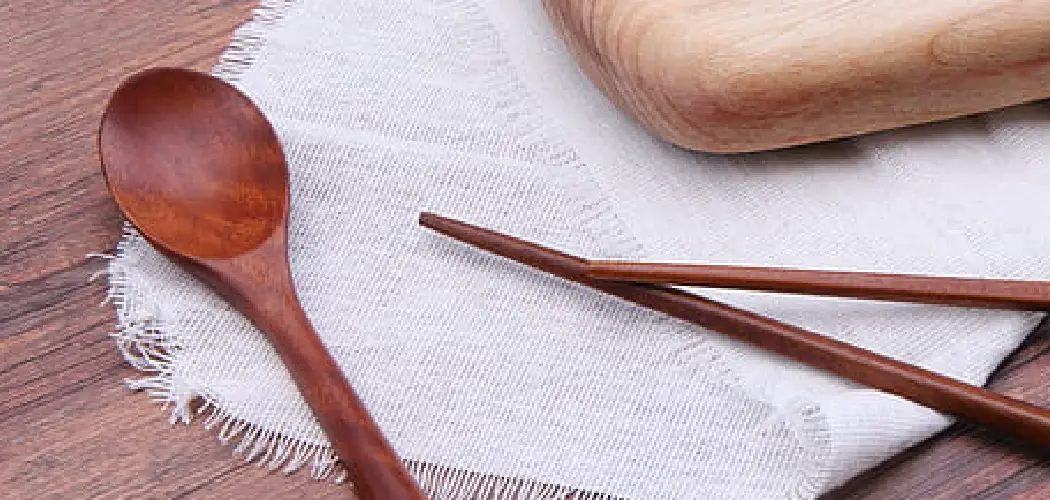Are you wondering how to wash wooden chopsticks? Washing them can be more complicated than it seems, as there is a specific way that’s recommended to ensure they stay clean and don’t get damaged. If you’ve been asking yourself, “How do I wash my wooden chopsticks?” chances are you’re not alone! Don’t worry – we’ve got all the details covered for keeping your precious utensils in top shape.
Whether you’re using disposable or reusable wooden chopsticks, the first step in cleaning them is to rinse them with lukewarm water. In this blog post, we’ll go over why it’s important to use the right cleaning methods for wood chopsticks, exactly what those methods entail, and some extra tips-n-tricks for added safety.
So without further ado, let’s jump into the different ways of washing wooden chopsticks — plus everything you need to know about maintaining their look and durability!
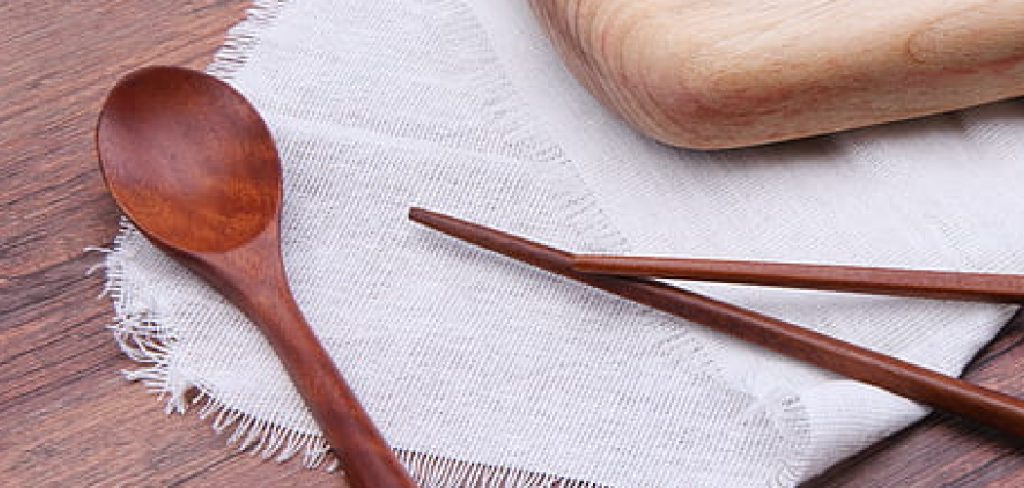
What Will You Need?
To clean your chopsticks, you’ll want to have a few handy tools:
- Lukewarm water
- A soft sponge or cloth
- Mild dish soap
- A toothbrush (optional)
Now that you have all the necessary supplies let’s go over how to clean wooden chopsticks properly.
10 Easy Steps on How to Wash Wooden Chopsticks
Step 1. Use Lukewarm Water
Begin by rinsing your chopsticks under lukewarm water, removing any food particles and dirt that may be stuck in the grooves. You can use a soft sponge or cloth to help remove any residue that won’t come off with just the water. As a reminder, ensure the water’s temperature is lukewarm rather than hot, as extreme heat can cause damage and warp your chopsticks.
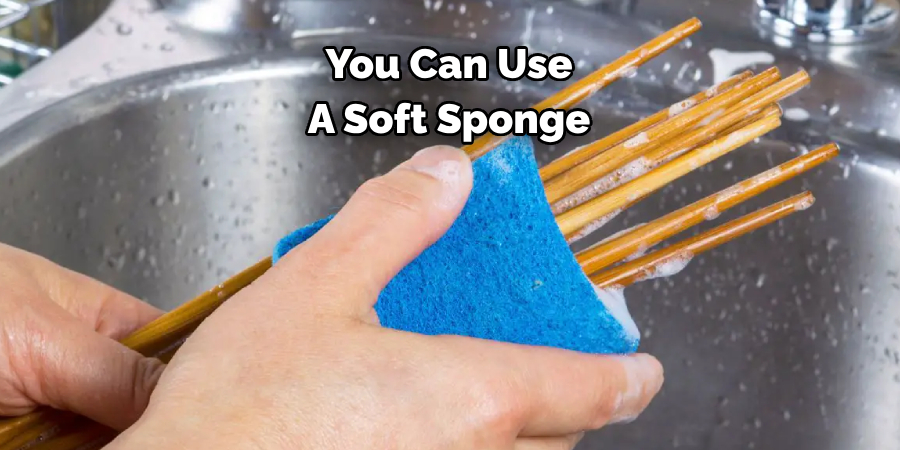
Step 2. Use Mild Dish Soap
Once you’ve given your wooden chopsticks a good rinse, apply a small amount of mild dish soap and lather it up with your hands, sponge, or cloth. Make sure to get all the nooks and crannies! You can also use a toothbrush to get into any hard-to-reach spots.
Step 3. Rinse Again
After giving them a thorough scrubbing, be sure to give your chopsticks another rinse in lukewarm water. This will ensure that no soap residue is left on the wood material, which can cause damage over time. Additionally, make sure all the lather is gone before moving on to the next step.
Step 4. Let Them Air Dry
Once adequately rinsed, lay the chopsticks out on a clean, lint-free towel and let them air dry. Don’t attempt to wipe off any moisture with a cloth, as this will lead to watermarks and streaks. You can use a fan or hairdryer in a cool setting (optional) to speed up the drying process. If you’re using disposable chopsticks, discard them after drying, as they cannot be reused.
Step 5. Use a Toothbrush (Optional)
If you want to give your wooden chopsticks an extra deep clean, you can use a toothbrush to scrub away any hard dirt or food particles that may be stuck in the grooves of the wood material. Make sure to use gentle strokes and only apply light pressure when scrubbing – it’s important not to damage the wood! Don’t forget to rinse them off with lukewarm water afterward.
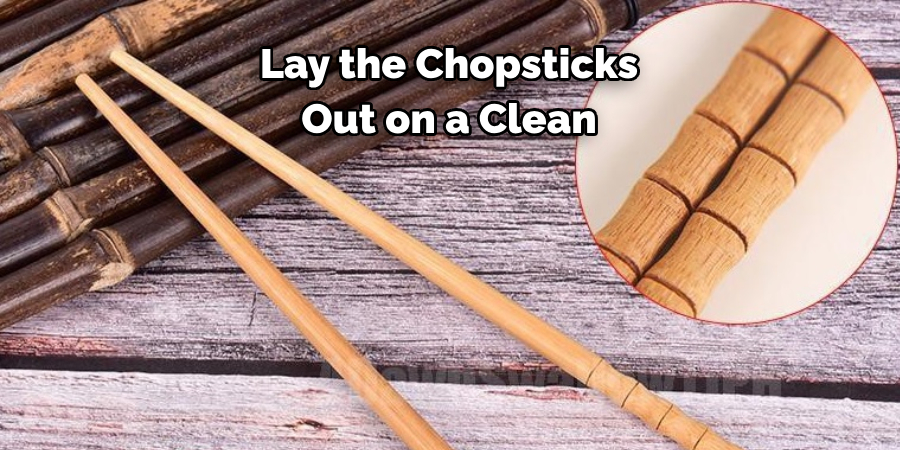
Step 6. Keep Away from Heat Sources
Once they are scorched, it’s important to keep them away from direct heat sources such as a stovetop or oven. This will help prevent the wood material from drying out and cracking. Additionally, make sure to store them in a cool, dry place.
Step 7. Store Them Properly
Wooden chopsticks should be stored in a cool, dry place away from moisture and direct sunlight. If you have reusable wooden chopsticks that come with their own storage box, then this is the ideal way to store them when not in use! Keep your chopsticks off metal surfaces as well – this can cause discoloration over time.
Step 8. Inspect Before Use
Before using any type of chopstick (whether disposable or reusable), always inspect them for any signs of damage, discoloration, or warping. If you notice anything suspicious, it’s best to discard the chopsticks and get a fresh set. Try to use them as soon as possible after washing so they don’t have a chance to dry out and crack.
Step 9. Avoid Soaking
Wooden chopsticks should never be soaked in water, as this can cause the wood material to expand and crack over time. If you need to clean off a tough stain or residue, use a toothbrush instead of soaking the utensils in water. Keep in mind that soaking should only be done as a last resort!
Step 10. Don’t Put Them in the Dishwasher
Lastly, never put wooden chopsticks into the dishwasher! The high heat temperatures will cause serious damage to the wood material and should be avoided at all costs! Hand washing is the only way to go when cleaning wooden chopsticks.
Now that you know how to wash your wooden chopsticks properly, you can enjoy them for years to come! Always inspect them before use and avoid soaking or putting them in the dishwasher. By following these easy steps, you can keep your chopsticks looking like new!
5 Additional Tips and Tricks
1. When washing wooden chopsticks, using warm water rather than hot is important. Hot water can damage the wood and cause it to warp or discolor.
2. Use a soft cloth or sponge when washing your chopsticks instead of a metal scrub brush, as the latter can cause scratches on the wood surface.
3. To help remove stubborn stains and dirt, add a few drops of mild dishwashing soap to the warm water before wiping down your chopsticks.
4. Once clean, dry off any remaining moisture with a soft cloth before storing your wooden chopsticks in a dry area.
5. If you plan on reusing the same pair of chopsticks for multiple meals, it’s important to thoroughly wash them after each meal to prevent bacteria buildup and ensure food safety for future meals.
With these tips and tricks, you can properly wash your wooden chopsticks and keep them clean, safe, and sanitary for future meals.
5 Things You Should Avoid
1. Never soak your wooden chopsticks in water for any length, as this can cause them to warp or discolor.
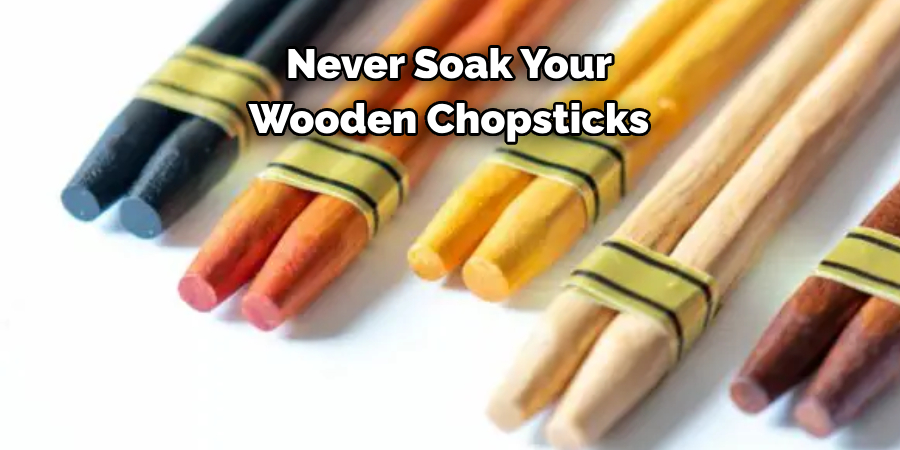
2. Avoid using abrasive cleaners or metal scrub brushes on your chopsticks, as these can damage the wood surface.
3. Don’t store your wooden chopsticks in an area with high humidity or moisture, which could lead to mold growth over time.
4. Never leave food residue on your chopsticks after a meal, and clean them right away before storing them for later use.
5. Lastly, never put your wooden chopsticks in the dishwasher, as the hot water and detergent are too harsh and can cause irreparable damage to the wood surface.
These tips will help you protect your wooden chopsticks and maintain their integrity for many future meals!
What Oil Do You Use for Wooden Chopsticks?
If you want to give your chopsticks a glossy finish and protect them from water damage, consider applying a light coat of food-safe oil onto the wood surface. You can use mineral oil, walnut oil, or coconut oil. All these oils are edible and safe for food contact, but it’s best to avoid using vegetable oils as they can spoil over time.
Simply apply a thin layer of the chosen oil onto your wooden chopsticks, then buff away any excess with a soft cloth or paper towel. Applying this protective coating will help keep your chopsticks looking good and provide an extra layer of protection against moisture.
By following these tips, you can keep your wooden chopsticks looking great and lasting a long time!
Should You Boil Wooden Chopsticks?
No, you should never boil wooden chopsticks. Boiling can cause warping or discoloration of the wood surface and even lead to cracks if the water temperature is too high. Use warm water and a few drops of mild dishwashing soap to clean your chopsticks properly. This will eliminate any lingering germs and bacteria while keeping your wooden chopsticks intact.
By avoiding boiling, you’ll be able to keep your chopsticks looking great for many meals to come!
Why Do People Rub Wooden Chopsticks?
Rubbing wooden chopsticks is a common practice among Japanese and Chinese cultures. It’s said to be done for several reasons, such as:
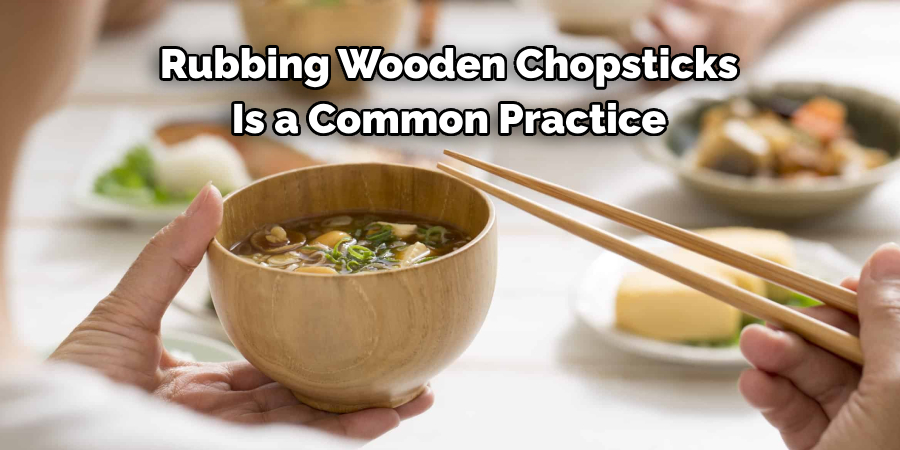
- To reduce splinters or jagged edges.
- To smooth out the surface of the wood.
- Remove any lingering dirt or food residue from the chopsticks before using them for eating.
- As an act of respect show care towards your utensils.
Overall, rubbing your wooden chopsticks can be beneficial in many ways! Not only does it help keep them clean and sanitary, but it also shows respect and care when using them at mealtime. So give them a good rub next time you take out your chopsticks!
Conclusion
As you can see, washing wooden chopsticks is simple. All it takes is five simple steps and a few minutes of your time. With proper handling, wooden chopsticks can last for years without being replaced. They’ll also stay clean, so you and your family can enjoy eating delicious meals with them without worry!
Whether you already own wooden chopsticks or are considering buying some, following these guidelines will help ensure they stay hygienic, attractive, and long-lasting. Who knew good chopstick hygiene was so attainable? Now go forth and wash away – your delicious meals await!
Hopefully, the article on how to wash wooden chopsticks has helped you get a better understanding of the subject. With these tips in mind, you’ll be able to keep your chopsticks looking good and lasting for years to come! Happy cleaning!
You Cancheck it Out to Make a Resin Cutting Board

